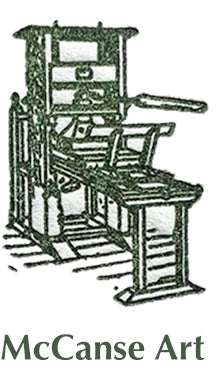Charles Hepburn Scott
Charles Hepburn Scott (1886-1964) was born in Ayrshire in Scotland in 1886. After spending his childhood in his native country and studying at the Glasgow School of Art, he immigrated to Canada in 1912 to begin an expansive career developing the burgeoning arts culture of the Canadian west coast. Scott came to Calgary to take up a position as the Arts Supervisor of the city’s schools. However, Scott quickly discovered the city had “little sympathy” for the arts (Thom 6); just two years later Scott switched cities to take up the same post in Vancouver.
Scott had little time to get settled in his new city. The first World War broke out and Scott left Canada to go overseas and join the war effort, but his service was cut short when he was wounded on the western front. A year later, Scott found himself in Britain and in love; he married in 1916 and returned to Canada in 1919 with his wife, Jean Smith Melvin.
Scott resumed his post in Vancouver for some time before he was invited to serve as the second principal of the Vancouver School of Decorative and Applied Art. Scott switched jobs in 1926 and stayed with the school until 1952, during this time helping grow Vancouver’s art culture school.
His term was not without its ups and downs; Scott endured budget cuts, the Great Depression, another World War, and many administrative changes throughout, including a shortage of staff and artists. Realizing he needed help, Scott brought in some key artists to work with him at the school, namely Jock Macdonald and Fred Varley. Already established artists—Varley in particular—their presence helped propel the school’s reputation and position in Canadian arts culture, although the relationship between the three was ultimately turbulent and soured over money disputes.
Scott’s influence as a teacher and arts educator quickly came to extend beyond the reach of the school. He became involved with teaching at the Department of Education at the University of British Columbia. In 1931, with the help of H.A. Stone, Scott founded the Vancouver Art Gallery, and continued teaching at the gallery alongside his work in the schools. He became a member and later president of the B.C. Arts League.
Although preoccupied with his professional commitments, Scott was always working on his own art when leisure time afforded it. Scott worked in watercolour, oil, graphite, and printmaking; initially influenced by a 19th century approach to nature and palette, later taking up a style more similar to the Group of Seven, Scott’s work eventually grew more simplified in composition and technique. He exhibited both locally and internationally with associations and institutions that included the Royal Academy of Canadian Artists, Canadian Wembley Exhibition, the Dominion Overseas Exhibition, and the Canadian Coronation Exhibition in London.

Scott died in 1964 in Vancouver, where he left behind a legacy as both an artist and teacher who changed the landscape of arts culture and education in the west coast.
Written by Mina Ivosev.
Sources:
Macdonald, Colin S. A Dictionary of Canadian Artists. Volume Eight, Part One. Canadian Paperbacks Publishing, 2006.
Thom, Ian M. Charles Hepburn Scott. Vancouver Art Gallery, 1989.
